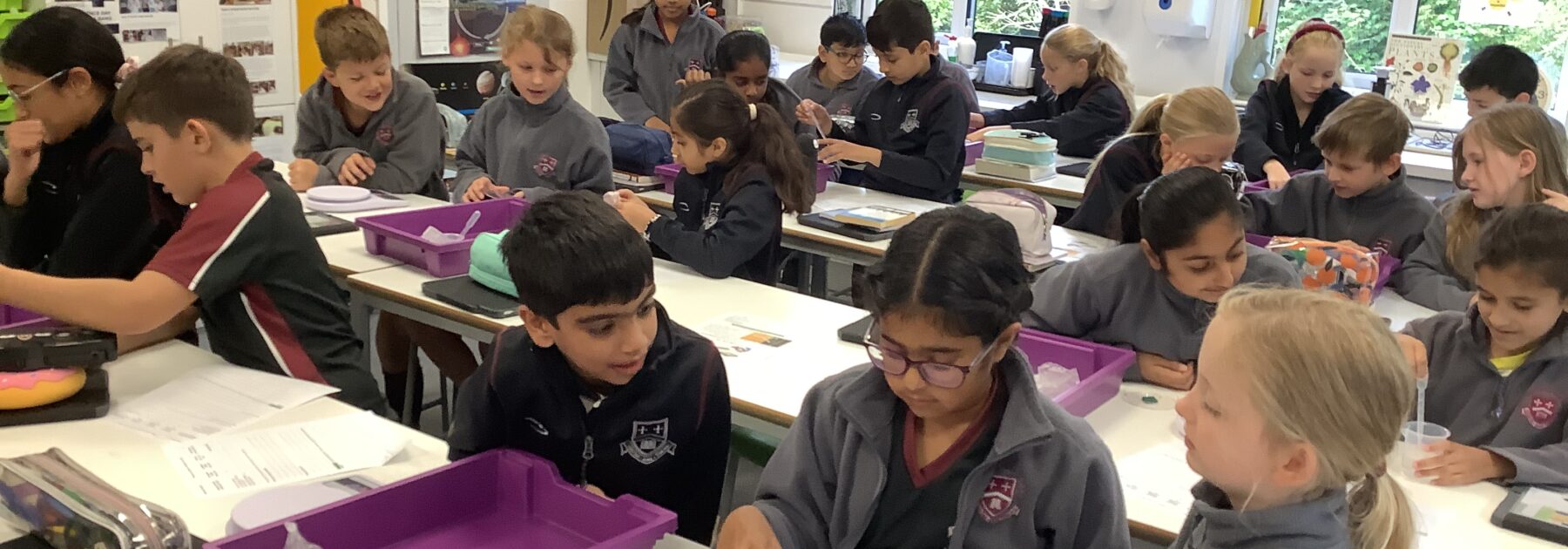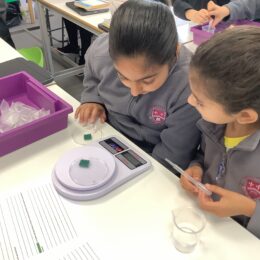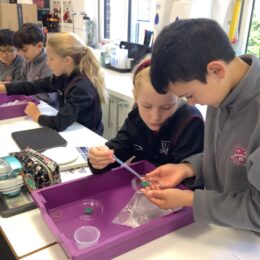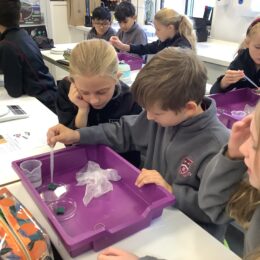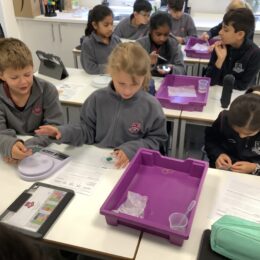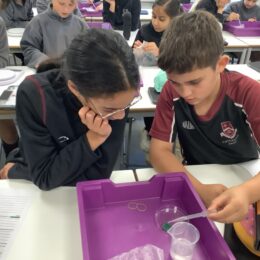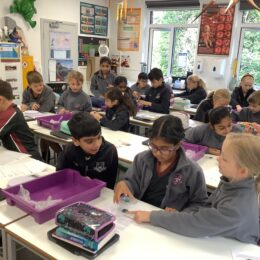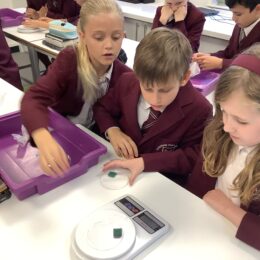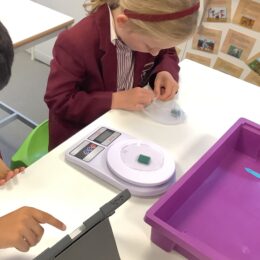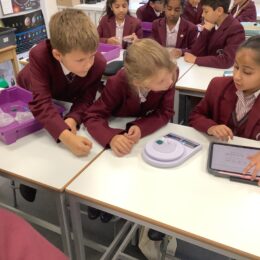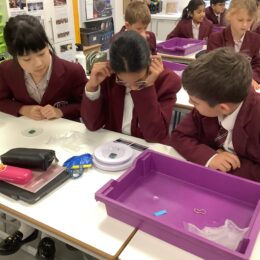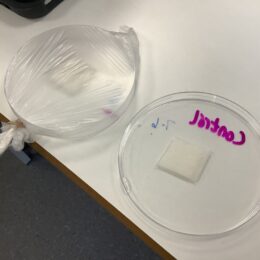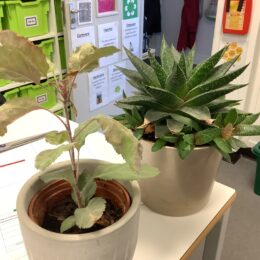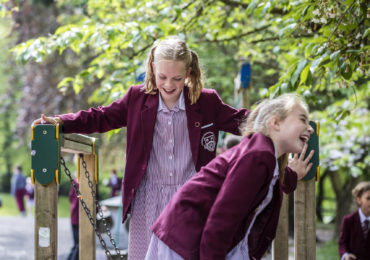Year 5 Scientists Research Leaf Structure
Our super scientists in Year 5 undertook a challenge to see if they could measure and quantify the difference between how succulents and deciduous leaves handle moisture retention using paper towels and scouring pads as models.
We have been studying how characteristics of plants and animals help them survive and thrive in different biomes around the globe and that special adaptations to retain water are essential if you are in a drought-prone environment such as the desert.
Comparing our leaves in real life using plants in the lab we saw how the deciduous apple tree leaves (a mini-tree we grew from an apple pip) compared it to varieties of aloe, a type of succulent. We discovered the apple leaves were: flexible, soft, thin, not shiny, going a little brown due to the time of year and had a supple serrated edge. By contrast the aloe leaves were: inflexible, pointed, rounded, firm, a bit shiny, had bumpy ridges all over, were bright green and had a stronger, tooth-like edge which would certainly deter many animal mouths.
We looked deeper at the structures and features and found that although the apple leaves did have a waxy layer on them to help stop water loss and sun damage, the aloe had a very, very thick waxy layer and compared this to other leaves such as cabbage and lettuce (we do not have to cook lettuce to eat it, and water beads and rolls off cabbage due to the wax layer). This wax acts like lip balm or emollient cream and traps moisture inside the leaf protecting it from wilting and dying in droughts. Then we looked at how the spongy structure of the aloe also helps trap moisture in the leaves.
Together we designed an experiment to look at how the waxy layer and spongy texture both help keep the leaves hydrated using pipettes, petri dishes, sandwich bags, paper towels and scouring pads.
Using the pipettes we dropped water onto squares of paper towels (deciduous leaf analogue) and the same sized squares of scouring pad (succulent leaf analogue) until they were saturated and then weighed them. Half of these samples were then enclosed in sandwich bags (waxy layer analogue) and left for a week in the same conditions in the science lab preparation room, making sure we had a ‘control’ experiment to compare our result to (paper towel without sandwich bag).
We excitedly compared our results to the predictions we made and were delighted to see we were really accurate!
Our findings:
Experiment 1 – control – paper towel, no cover (poorly protected deciduous leaf) lost all moisture
Experiment 2 – paper towel, with cover (better protected deciduous leaf) lost most moisture
Experiment 3 – scouring pad, no cover (poorly protected succulent leaf) lost some moisture
Experiment 4 – scouring pad, with cover (better protected succulent leaf) lost almost no moisture at all!
Of all the findings, we were most surprised by Experiment 3 and the amount of moisture that was retained. We all made a promise to let our washing-up dish cloths air better in future!
Great job with all the planning, measuring and weighing Year 5 – you were all super scientists and achieved great results which proved how important a spongy structure and waxy coating are to the survival of plants in water stressed areas!
Suzanne Hills-Matthews
Head of Science
Back to all news

